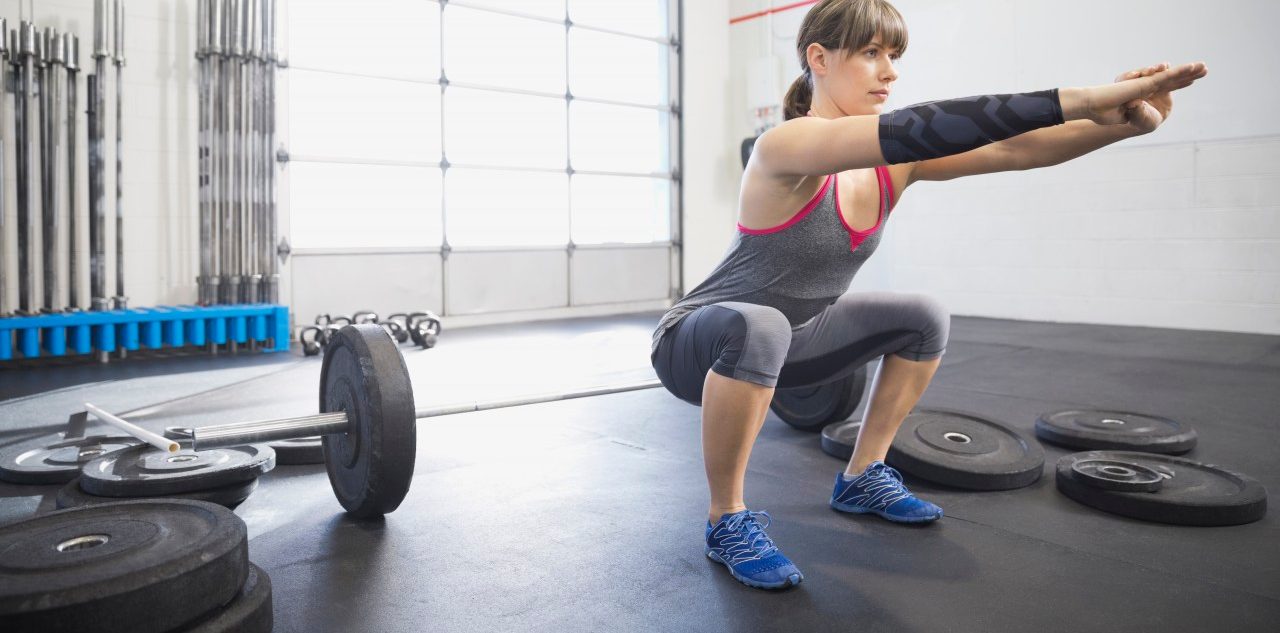Functional Fitness — Workouts for What Your Body Was Intended to Do

You’re an avid exerciser; but does being able to run 5 miles or bench press 200 pounds help you live better?
Do you still play? When was the last time you climbed a tree or hopped from rock to rock to ford a stream? Chances are you stopped “playing” sometime in your childhood. But those physical challenges you accomplished because they were fun then could be the key to maintaining your physical functionality now.
Functional fitness (also called neuromotor fitness) is not a new philosophy, but it’s increasingly being emphasized in some of the newly popular exercise modalities. CrossFit, Parkour, MovNat, and bodyweight training all stress elements of functional fitness. Tai chi and yoga are also examples of practices that enhance functional fitness.
Functional exercise helps you perform activities of daily living by incorporating motor skills such as balance, coordination, range of motion, and an awareness of how your body is oriented in space (proprioception), with strength training.
An important distinction between typical strengthening exercises and functional strengthening exercises is functional exercises involve multiple muscle groups and enhance your ability to do a particular movement, for example a lunge or a squat, rather than focusing on an individual muscle, as in a bicep curl.
Essentially, it’s fitness that involves basic motor skills, but requires coordinating your movements in a more complex way, explained Carol Ewing Garber, PhD, past president of the American College of Sports Medicine and a professor of movement sciences and education at Columbia University in New York.
Your approach to functional fitness will depend on your goals. Are you an athlete trying to improve your competitive performance? Were you injured and are trying to regain your functionality? Or, are you simply trying to improve your ability to do the things you do every day without becoming fatigued? Functional exercise plays a role in all of these efforts and is especially beneficial for older adults because it can improve balance, agility, strength, and coordination, so it’s helpful in preventing falls and other injuries, in addition to improving quality of life.
Beyond daily living, functional fitness also plays a role in how well you perform in sports.
“Sports activities are going to require different kinds of motions, and the idea of functional fitness is a focus on can you perform that particular movement or activity and how can we train you best to do those activities in the most optimal way?” Garber said.
It can be challenging
Some of the newer fitness training methods might be considered highly challenging, even extreme, by some. CrossFit and boot camps, or military style training, are well known as intense forms of exercise. Some less well-known regimes such as MoveNat and some survival schools take their participants outdoors and use what’s found in nature to provide physical challenges and conditioning.
“As happens a lot with the world of fitness there always are new configurations and bringing different types of fitness trends together to make new things to keep people’s interest,” Garber said.
And for some, this type of exercise may be appropriate.
“There are those people who are into ultra-endurance . . . who at that level of fitness really enjoy and crave that extra challenge,” Garber said, adding that these types of routines are probably more suited to those who are very fit, training a lot, and want to try something different and are perhaps interested in “learning more about outdoor survival and developing the confidence that comes with being outside.”
You can still get the benefit
If these hard-core workouts aren’t for you, functional fitness training can still benefit your exercise routine. If you’ve been inactive, start out with a goal of meeting the recommendation for 150 minutes of moderate aerobic exercise per week, with muscle strengthening activities that include all major muscle groups on 2 or more days. Make sure you talk to your doctor before starting this, or any, exercise program.
If you’re someone who’s already active, but don’t have a strength training component, add it.
“Strength training is really an essential component . . . and it’s particularly important for adults because it helps maintain your muscle strength and also keeps your bones healthy and increasingly we’re learning that it’s also very helpful with preventing some of the chronic diseases like diabetes and heart disease,” Garber said. “It certainly makes a big difference in healthy aging.”
But don’t overdo it.
“To improve your fitness, adding more intensity or longer duration of your exercise program would be something for people to consider, and I certainly would recommend that, but I think it’s also a fine balance. If you’re doing something that works for you and you’re doing it regularly without fail try not to make huge changes because it derails you,” she said. Additionally, people who rapidly go from little or moderate activity to large amounts of exercise are more prone to injury.
Ideally, your fitness program should be individualized to you and should take into consideration your current level of fitness and your goals. It’s not “one size fits all.” Specialized and highly challenging types of fitness programs are absolutely a reasonable choice for some people, but they’re definitely not for everybody. If you do decide you want to try one of the more challenging programs, build up gradually and keep your expectations reasonable.
If you’re looking for a more moderate way to incorporate functional fitness into your workout, consider a session or two with a personal trainer who can create an individualized workout routine to meet your specific goals.
“Hopefully people can adopt an optimal fitness program, but what that optimal program is really can vary very much across different individuals and also across different points in people’s lives,” Garber said.
Updated:
April 08, 2020
Reviewed By:
Janet O’Dell, RN